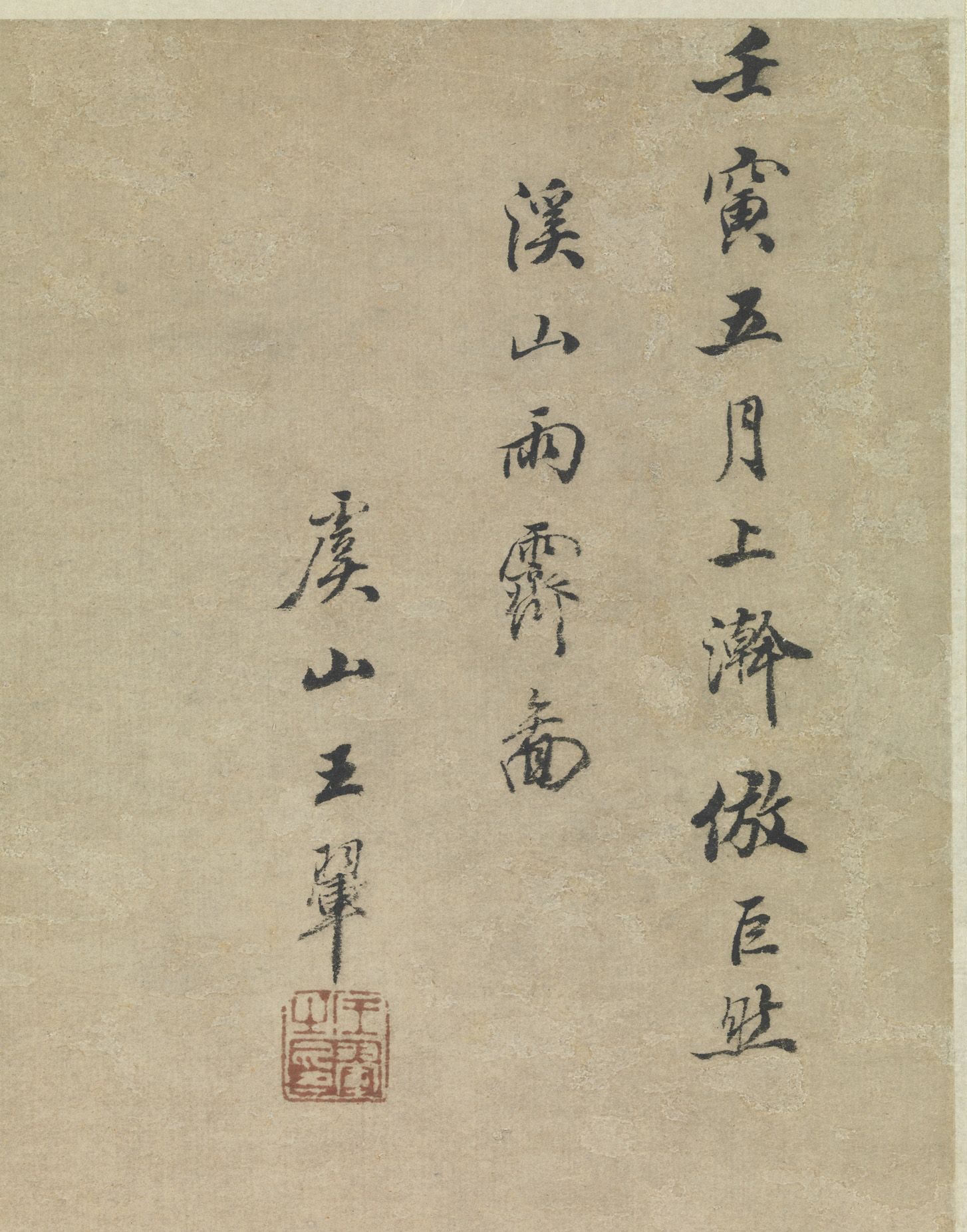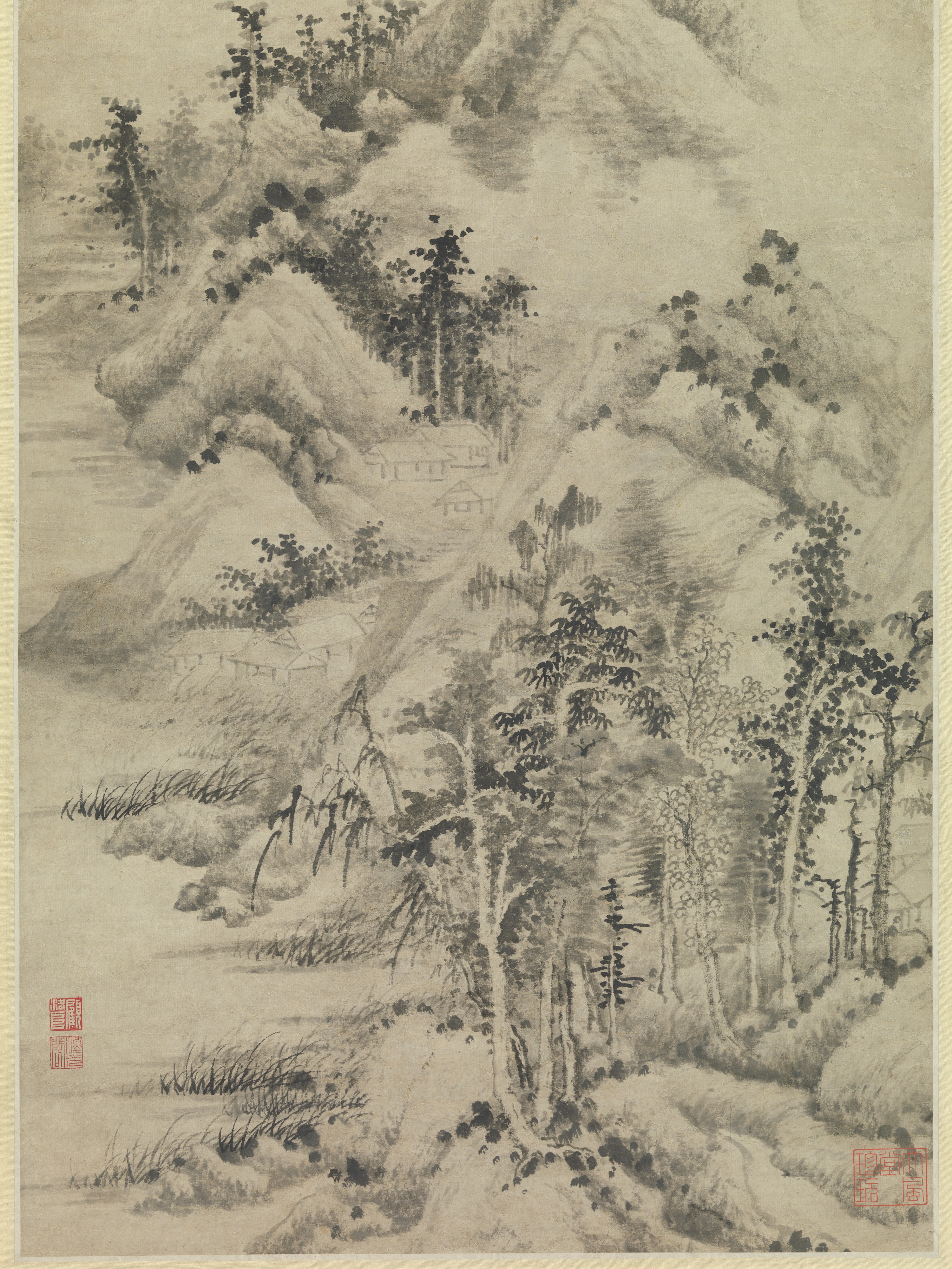Clearing after Rain over Streams and Mountains
Wang Hui Chinese
Not on view
Freely adapting elements traditionally associated with Juran (act. ca. 960–85)—conical mountains defined by "hemp-fiber" texture strokes and topped by dense groves or clusters of boulders interspersed with foliage dots—and mixing them with the "cloudy mountains" imagery of Mi Youren (1074–1151), Wang has dematerialized the tenth-century master's substantial forms by paring down motifs, flattening forms into calligraphic patterns, and using subtly graded ink washes to evoke a serene landscape cloaked in clouds and mist. While the painting's moist atmosphere is characteristic of Juran, the seamless progression of repeated triangular hills from front to back reveals Wang's method of integrating pictorial elements within a zigzag compositional pattern he called a "dragon vein."
Done when the artist was only thirty, the luminous ink tones and perfectly controlled lyrical composition are characteristic of works from the artist's early period.
#7691. Clearing after Rain over Streams and Mountains
Due to rights restrictions, this image cannot be enlarged, viewed at full screen, or downloaded.
This artwork is meant to be viewed from right to left. Scroll left to view more.




